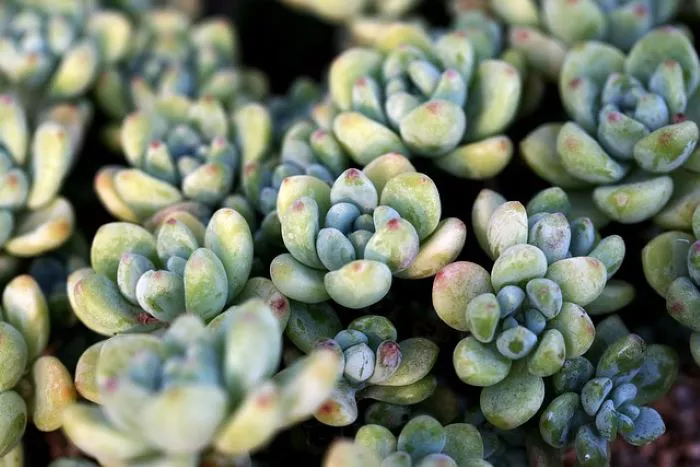Succulents are popular for their unique shapes, vibrant colors, and low maintenance requirements. These hardy plants are well-suited for various environments, making them ideal for both beginners and experienced gardeners. However, to ensure that succulents thrive, it is essential to understand their specific needs. This article will guide you through the key factors that contribute to the health and vitality of succulents.
Understanding Succulents
Succulents are plants that store water in their leaves, stems, or roots. This adaptation allows them to survive in arid environments. They come in many varieties, each with unique characteristics. Some common types include Echeveria, Sedum, and Aloe. Understanding the specific needs of the succulent species you are growing is crucial for their care.
Choosing the Right Soil
The foundation of a healthy succulent is quality soil. Succulents require well-draining soil to prevent root rot. Regular potting soil retains too much moisture, which can harm these plants. Instead, choose a soil mix designed for cacti and succulents. You can also create your own mix by combining potting soil with perlite or coarse sand. This combination improves drainage and aeration.
Selecting the Right Container
The container you choose for your succulents plays a significant role in their health. Select pots with drainage holes to allow excess water to escape. Terracotta pots are an excellent choice because they are porous and help wick moisture away from the roots. Ensure that the container size is appropriate for the plant. A pot that is too large can retain excess moisture, while a pot that is too small may restrict growth.
Watering Techniques
Watering is one of the most critical aspects of succulent care. Overwatering is the leading cause of succulent death. To avoid this, follow these guidelines:
Water thoroughly but infrequently. Allow the soil to dry out completely between waterings. Depending on your climate, this may mean watering every two to three weeks.
Check the soil moisture before watering. Insert your finger into the soil about an inch deep. If it feels dry, it is time to water.
Water in the morning or early afternoon to allow excess moisture to evaporate. This helps prevent mold growth and root rot.
Use room temperature water to avoid shocking the plant. Watering directly at the base of the plant helps keep the leaves dry.
Providing Adequate Light
Light is essential for the growth and health of succulents. Most succulents thrive in bright, indirect sunlight. Here are some tips for providing adequate light:
Place your succulents near a south or west-facing window where they can receive plenty of sunlight.
If natural light is limited, consider using grow lights. These lights can provide the necessary spectrum for healthy growth.
Rotate your plants every few weeks to ensure even exposure to light. This helps prevent them from becoming leggy or uneven.
Be cautious of direct sunlight during the hottest part of the day, as this can scorch the leaves.
Temperature and Humidity
Succulents prefer warm temperatures and low humidity. Most thrive in temperatures between 60°F and 80°F (15°C to 27°C). Here are some tips to maintain the right environment:
Avoid placing succulents in areas with extreme temperature fluctuations, such as near heating vents or drafty windows.
If you live in a humid climate, ensure good air circulation around your plants. This helps prevent mold and fungal issues.
During winter, if you bring succulents indoors, keep them away from cold drafts and ensure they receive adequate light.
Fertilizing Succulents
While succulents do not require frequent fertilization, providing nutrients can promote healthy growth. Here are some guidelines for fertilizing succulents:
Use a balanced, diluted fertilizer designed for cacti and succulents. Fertilizing during the growing season, typically in spring and summer, is most beneficial.
Fertilize every four to six weeks during the growing season. Avoid fertilizing in fall and winter when the plants are dormant.
Always follow the manufacturer’s instructions for dilution rates. Over-fertilizing can lead to salt buildup in the soil, which can harm the plants.
Pruning and Maintenance
Regular pruning and maintenance help keep succulents healthy and looking their best. Here are some tips for effective care:
Remove dead or damaged leaves as needed. This prevents pests and diseases from taking hold.
If your succulent becomes leggy, prune back the elongated stems. This encourages new growth and a fuller appearance.
Repot succulents every couple of years to refresh the soil and give the roots more space to grow. Choose a pot that is slightly larger than the current one.
Monitor for pests such as mealybugs or aphids. If you notice any, treat them promptly with insecticidal soap or neem oil.
Common Problems and Solutions
Even with the best care, succulents can face challenges. Here are some common problems and solutions:
Overwatering: If leaves become mushy or discolored, this may indicate overwatering. Allow the soil to dry out completely and reduce watering frequency.
Underwatering: If leaves are shriveling or dropping, the plant may need more water. Water thoroughly and adjust your watering schedule.
Legginess: If succulents grow tall and spindly, they may not be receiving enough light. Move them to a brighter location or adjust the grow lights.
Pest Infestation: Regularly inspect your plants for pests. If you find any, isolate the affected plant and treat it with appropriate pest control methods.
Conclusion
Making succulents thrive requires understanding their specific needs and providing the right care. By choosing the right soil, container, watering techniques, and light conditions, you can create an environment where your succulents flourish. Regular maintenance, including pruning and monitoring for pests, will help ensure their long-term health. With patience and attention to detail, you can enjoy the beauty and resilience of succulents in your home or garden. Embrace the journey of succulent care, and appreciate the joy these unique plants bring to your life.


